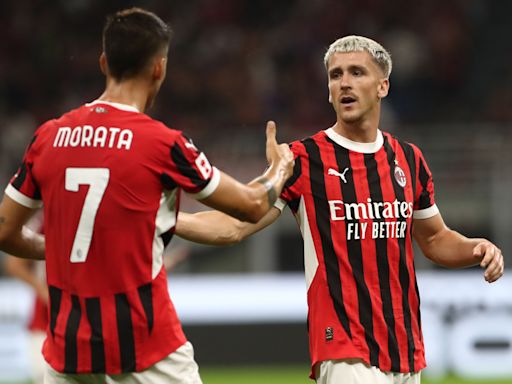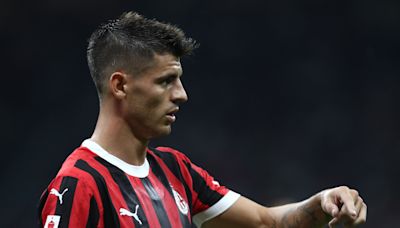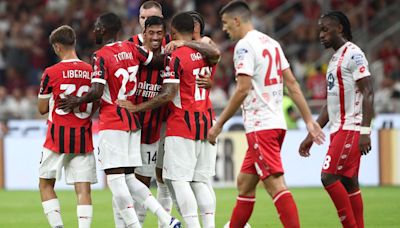Search results
Milan[ 5] ( Lombard: [miˈlãː] ⓘ; Italian: Milano, Italian: [miˈlaːno] ⓘ) [ 6] is a city in northern Italy, regional capital of Lombardy, and the second-most-populous city proper in Italy after Rome. The city proper has a population of about 1.4 million, [ 7] while its metropolitan city has 3.22 million residents. [ 8]
- Overview
- Character of the city
Milan is the capital city of the region of Lombardy in northern Italy. It is the second largest city by population in Italy, behind Rome. It is Italy’s leading financial centre and its most prosperous manufacturing and commercial city.
Where is Milan located?
Milan lies to the north of the Po River in northern Italy, halfway across the immense plain spreading between the Ticino River, to the west of the city, and the Adda River, to its east. The city’s site is 400 feet (122 metres) above sea level. To the north rise the Alps.
What is Milan known for?
Milan is known as Italy’s “moral capital.” Milanese believe that their positive work ethic has led to Milan becoming a world capital of fashion, design, finance, business services, and media and publishing. Milan is also famous for its art and architecture, as it is the home of Leonardo da Vinci’s Last Supper and a celebrated Gothic cathedral, the Duomo.
When is Milan Fashion Week?
The fact that Milan is at a distance from much of the rest of Italy, that it is peripheral in a geographic sense, does not explain its position of “second city,” a position it has always vainly fought. Indeed, some of the greatest European capitals are peripheral in this sense. Rather, Milan’s role was the consequence of the immense historical importance and the enormous accumulation of myths and symbols that conferred on Milan’s antagonist, Rome, an inevitable prestige. During the Risorgimento, the 19th-century movement for Italian unification, Rome became the heart of a future anticipated in the collective fantasies of the Italian people.
Yet although Rome remains the political capital of Italy, Milan has long been known as its “moral capital.” When the Milanese assert that their city is the moral capital, they not only express the ancient regionalism typical of all Italy and known as campanilismo (a reference to the church bell of each city), but they also refer to the city’s quality and values, historical as well as contemporary. And if the rest of Italy, Rome included, accepts this statement—or rather accepts the fact that the statement is made—it is because it is more than a simple claim. The claim is justified by contributions in every field—economic, cultural, and ideological—that the city of Milan, in modern times, and particularly since the unification of Italy, has made to the Italian state.
It was partly out of an opposition to the nature of Rome as a capital of government, and thereby the perceived capital of taxation, state spending, and political skullduggery, that Milan’s self-image as Italy’s moral capital was born. This notion was cemented in the late 19th century as an industrializing Milan set itself up as a capital of innovation, production, and efficiency—values the Milanese considered absent in Rome. The city’s sense of moral superiority—particularly the idea that the Milanese people were morally superior because of their positive work ethic—was reinforced as Milan ultimately became Italy’s centre of industry and finance, as well as the motor behind the country’s extraordinary economic development in the 20th century. Today Milan is the richest city in Italy and one of the richest in Europe.
Even though many intellectuals, writers, and artists have abandoned the city for Rome, Milan has succeeded in keeping alive an inquisitiveness and a spirit of polemic that involves not only itself and Rome but all other cities in Italy as well. The increased importance of the mass media in Italy, particularly of the Milan-based television networks, also has favoured the Milanese perspective—though this development has not damaged the poetic image of Rome nor reduced the prosaic character of Milan. Nevertheless, when one remembers that in the 19th century a writer such as Stendhal, one of the giants of French culture, wished to proclaim himself “Milanese” in his epitaph, one must indeed believe in the fascination Milan exerted then, and still does, and of which the city is fully conscious.
Exclusive academic rate for students! Save 67% on Britannica Premium.
Learn More
- Milan Cathedral. Milan Cathedral is a truly monumental building and is famed for its sublime architecture and took over 600 years to complete. Located in the centre of Milan in the self-named Piazza del Duomo, the cathedral was constructed in 1386 but not officially completed until 1965!
- Church of Santa Maria delle Grazie. Although the exterior of this church is not one of the most renowned, it still has a certain charm and grace – Created in 1497, the church features a Gothic style using red bricks and a large rear basilica.
- Grand Galleria Vittorio Emanuele II. As you walk into the Grand Gallery, you might think you were stood inside the entrance hall to an opera house or palace – Not a shopping mall.
- Castello Sforzesco. This 15th century castle has a central location in Milan and is set in extensive grounds and gardens. Created in 1370, the original design has been modified and added too greatly but still retains its elegance and status of power.
Discover Milan's attractions, from Leonardo da Vinci's The Last Supper to the Gothic Duomo, and explore its fashion, culture and history. Find the best time to visit, the top things to do, the free activities and the top picks from our travel experts.
10. Teatro Alla Scala. 7,808. Theaters. This world-renowned opera house was built in 1778, where many composers wrote and conducted works including such greats as Rossini, Puccini, Verdi and Toscanini. See ways to experience (73) 11. Stadio Giuseppe Meazza (San Siro) 6,128.
People also ask
What is Milan famous for?
Is Milan a city or city?
Is Milan a second city?
Where is Milan located?
Discover the best attractions, restaurants, bars and museums in Milan, Italy's fashion and design capital. From the Duomo to da Vinci's 'The Last Supper', explore the city's history, culture and nightlife with local tips.










